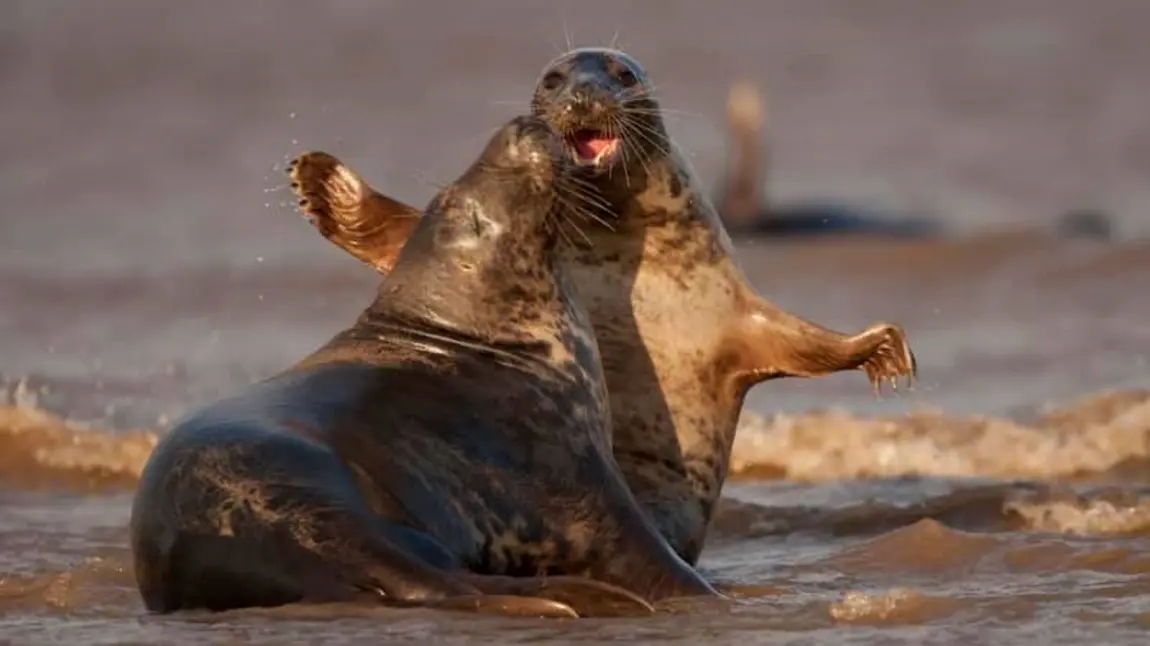Celebrate our amazing marine life this World Oceans Day

Living Seas Wales have told us some fun facts around 12 amazing sea creatures, which can all be found around our coastlines.
They also gave us some top tips on things we can all do to help protect our marine world. Living Seas Wales’ Project Manager Nia Jones recommends:
- reducing (or ending) single-use plastic usage
- picking up litter when at the beach
- sourcing seafood sustainably
- reducing energy consumption at home
She says:
"Simply telling people how incredible our marine wildlife is and why it’s important to look after it can make a difference.”
Risso's Dolphin
Risso’s Dolphins have no teeth in their upper jaw and can swallow their squid prey whole.

Nudibranch sea slug
The mesmerising nudibranch sea slug gets its name from the Latin for "naked" and "gills", as their gills aren't covered by a shell like some other marine snails.

Compass jellyfish
Compass Jellyfish change their sex from male to female as they mature. Jellyfish are 95% water and have no brain, blood or heart.

Lobster
Lobsters can theoretically live forever - getting older does not raise their chance of dying thanks to an enzyme called telomerase.

Atlantic grey seal
Atlantic Grey Seals are awesome divers and can reach depths of approx 70 metres when searching for food, holding their breath for up to 16 minutes.

Sunfish
Sunfish are the world's largest bony fish, reaching up to three metres long. They can be spotted during the summer months 'sunbathing' on their sides at the surface of the sea.

Mollusc
Limpets and other molluscs provide a vital link in the food chain for many of our rarer species.

Seahorse
There are two seahorse species in the UK: spiny [pictured] and long-snouted. Seahorses are the only species with a true reversed pregnancy: the female transfers the eggs to the male who self-fertilises.

Spider crab
Spider crabs can live up to 100 years old and have a leg span of 13 feet.

Thornback ray
The Thornback Ray buries itself in the sediment during the day and comes out at dusk to hunt.

Sea anemone
Sea anemones live attached to rocks, catching plankton and tiny animals from the water with their stinging tentacles.

Basking shark
The world’s second largest fish, the basking shark, can be found in Welsh waters during the summer months. However, their numbers have fallen by more than 95% around the UK.

What is Living Seas Wales?
The Wildlife Trust’s Living Seas Wales project is using National Lottery funding to find ways we can help look after our oceans.
The project is reconnecting people to a rich ocean world that can’t easily be seen, and helping to turn them into fans of conservation. Activities they have funded include:
- historical research
- rock pool rambles
- limpet stacking championships
- wildlife spotting
- beach cleans
- Citizen Science surveys
- conservation training
- recycled craft workshops
Discover more about Living Seas Wales' World Oceans Day activities on their Facebook page.
Find out more
Find out about other projects we have funded: Coast Care Northumberland and Secrets of the Solent.

